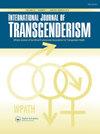Language and trans health
Q1 Social Sciences
引用次数: 91
Abstract
The use of appropriate language is a sensitive matter, because the meaning of words may be relative, situational, and language dependent. What is more, words inherently carry meaning that inevitably depends on underlying frames of reference. In this sense, language has a powerful performative power and impact. As a result, wordings, or word choices that are used without intent of harm (or even with the express desire to avoid it) may be experienced as harmful by listeners, who often bring their own experiential frame of reference to the table. Put plainly, words are often interpreted differently by individual readers, dependent on their situation and location (e.g., Hochdorn et al., 2016). Indeed, over time, contextually specific terms like transgender can change and shift in a complex fashion. It is, therefore, critical that we select language that is respectful, nonpathologizing and consistent with human rights standards, taking into account its shifting and complex contextual and cultural character. Ultimately this caution applies equally to trans health and all other formal and informal settings in which human interaction takes place. As both humans and researchers, language is our shared vehicle for expressing and presenting our ideas, thoughts, feelings, and opinions to the world and to one another. The word language itself is defined in the Oxford Textbook of English as (noun) “method of human communication, either spoken or written, consisting of the use of words in a structured and conventional way” (Stevenson, 2010). Put more explicitly, “the purpose of language is for communication” (Chomsky as cited in Osiatynski, 1984). Technological innovations have, of course, affected this, as has rapid globalization, which allows and encourages individuals from all over the globe to communicate and exchange ideas rapidly and continuously. Though technological advances have served as both medium and accelerator of communication, it remains language itself that ensures effective communication among cultures, countries, organizations, communities, and ultimately individuals, and it is critical that our linguistic choices are respectful of this. Clinical practice also has its own linguistic norms and conventions that further reflect the particular clinical model used. The use of language and clinical models that are respectful, nonpathologizing, and human rights based are critical principles of ethical contemporary trans health care, and clinical models must reflect this (e.g., approaches that can be classified as "reparative therapy" are to be avoided in all cases). At all times, it is important to account for and critically question existing power inequalities in one’s clinical practice, encounters, and writing, so as to join trans–health care users in dismantling pathologizing structures. Throughout history, language has been wielded to discriminate, abuse, marginalize, disrupt, and destabilize individuals and communities. With regard to trans people, language has been used (arguably, misused) by political, religious, legal, and medical cultural institutions for the purpose of normalizing their marginalization and discrimination against them. Examples are numerous (e.g., APA, 1987, 2000, 2013; Fenichel, 1930; Von Krafft-Ebbing, 1901; WHO, 1992), and cataloguing them is beyond the scope of this editorial. Suffice it to say that levels of linguistic discrimination range from simple cases of misapprehension and ignorance in the wider public to explicit acts of targeted violence by informed individuals. We are primarily interested here, having established a firm basis for the existence of such linguistic discrimination and violence, in articulating a strategy for moving past it in our clinical and academic practice, while holding accountable those who choose not to do so. One such strategy involves the development of trans cultural awareness seminars that promote respectful, nonpathologizing linguistic choices that are based on a human rights framework. Such trainings, which are useful in supporting clinical practice and promoting trans rights and health care broadly, are increasingly available to both the general public and health professionals. Indeed, these trainings are increasingly becoming mandatory for the latter group.语言与跨性别健康
使用适当的语言是一个敏感的问题,因为单词的意义可能是相对的,情境的,并且依赖于语言。更重要的是,单词固有的含义不可避免地依赖于潜在的参考框架。从这个意义上说,语言具有强大的表现力和影响力。因此,没有伤害意图的措辞或用词(甚至表达了避免的愿望)可能会被听众认为是有害的,他们通常会把自己的经验参考框架带到表中。简而言之,不同的读者对词语的理解往往不同,这取决于他们所处的情境和位置(例如,Hochdorn et al., 2016)。事实上,随着时间的推移,像跨性别者这样的语境特定术语会以一种复杂的方式改变和转变。因此,至关重要的是,我们要选择尊重、非病态和符合人权标准的语言,同时考虑到其变化和复杂的背景和文化特征。最终,这一警告同样适用于跨卫生和发生人际交往的所有其他正式和非正式环境。作为人类和研究人员,语言是我们共同的工具,用来向世界和彼此表达和展示我们的想法、思想、感情和观点。“语言”这个词本身在牛津英语教科书中被定义为(名词)“人类交流的方法,无论是口语还是书面语,包括以结构化和常规的方式使用单词”(史蒂文森,2010)。更明确地说,“语言的目的是为了交流”(乔姆斯基引用于Osiatynski, 1984)。当然,技术创新也影响了这一点,正如快速的全球化一样,它允许并鼓励来自世界各地的个人快速而持续地沟通和交换思想。虽然技术进步既是沟通的媒介,也是沟通的加速器,但确保文化、国家、组织、社区乃至个人之间有效沟通的仍然是语言本身,我们的语言选择必须尊重这一点,这一点至关重要。临床实践也有自己的语言规范和惯例,这些规范和惯例进一步反映了所使用的特定临床模式。使用尊重、非病理性和以人权为基础的语言和临床模式是当代跨性别保健伦理的关键原则,临床模式必须反映这一点(例如,在任何情况下都应避免可归类为"修复疗法"的方法)。在任何时候,重要的是要解释和批判性地质疑一个人的临床实践、遭遇和写作中现有的权力不平等,以便加入跨医疗保健用户拆除病理结构。纵观历史,语言一直被用来歧视、虐待、边缘化、破坏和破坏个人和社区的稳定。关于跨性别者,政治、宗教、法律和医疗文化机构一直在使用(可以说是滥用)语言,以使他们的边缘化和对他们的歧视正常化。例子很多(例如,APA, 1987年,2000年,2013年;Fenichel, 1930;冯·克拉夫特-埃宾,1901;世卫组织,1992年),对它们进行编目超出了本社论的范围。只要说,语言歧视的程度从公众的简单误解和无知到知情人士的明确有针对性的暴力行为,不一而足。在为这种语言歧视和暴力的存在建立了坚实的基础之后,我们在这里主要感兴趣的是阐明一种策略,以便在我们的临床和学术实践中克服它,同时追究那些选择不这样做的人的责任。其中一个策略是举办跨文化意识研讨会,促进基于人权框架的尊重、非病态的语言选择。这类培训有助于支持临床实践和广泛促进跨性别权利和保健,越来越多地面向公众和卫生专业人员。事实上,这些培训正日益成为后一类人的必修课。
本文章由计算机程序翻译,如有差异,请以英文原文为准。
求助全文
约1分钟内获得全文
求助全文
来源期刊

International Journal of Transgenderism
Social Sciences-Gender Studies
CiteScore
5.10
自引率
0.00%
发文量
0
期刊介绍:
International Journal of Transgenderism, together with its partner organization the World Professional Association for Transgender Health (WPATH), offers an international, multidisciplinary scholarly forum for publication in the field of transgender health in its broadest sense for academics, practitioners, policy makers, and the general population.
The journal welcomes contributions from a range of disciplines, such as:
Endocrinology
Surgery
Obstetrics and Gynaecology
Psychiatry
Psychology
Speech and language therapy
Sexual medicine
Sexology
Family therapy
Public health
Sociology
Counselling
Law
Medical ethics.
 求助内容:
求助内容: 应助结果提醒方式:
应助结果提醒方式:


